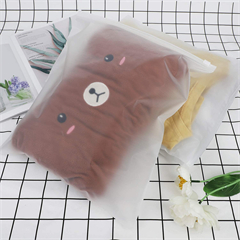1. Gather Your Supplies: Before you begin, you’ll need some essential knitting supplies:
- Yarn: Choose a yarn that’s appropriate for beginners. Look for worsted weight or medium weight yarn in a color you like.
- Needles: Start with medium-sized straight or circular needles. Needle size will depend on the yarn you choose; the label on the yarn usually suggests a needle size.
- Scissors
- Tapestry Needle: Used for weaving in loose yarn ends.
- Measuring tape or ruler
- Stitch markers (optional): Useful for marking specific stitches or sections of your work.
- Knitting gauge (optional): Helps you measure the number of stitches and rows per inch.
2. Learn the Basic Knitting Stitches: Start by learning the fundamental knitting stitches:
- Knit Stitch (K): This is the basic stitch that creates a smooth “V” pattern on the fabric.
- Purl Stitch (P): The purl stitch creates a bumpy texture on the fabric, which complements the knit stitch.
- Cast On: This is how you get your first row of stitches on the needle.
- Bind Off: The finishing technique that secures your stitches and creates a neat edge.
3. Choose a Basic Pattern: Look for simple knitting patterns designed for beginners. Scarves, dishcloths, and simple blankets are great starting projects. Avoid patterns with intricate designs until you’re more comfortable with the basics.
4. Read and Understand the Pattern: Carefully read through your chosen pattern to understand the instructions, required stitches, and techniques. Patterns often include abbreviations, so make sure you understand them before you start.
5. Practice Swatching: Before you dive into your project, create a small sample (swatch) using the chosen yarn and needles. This helps you ensure that your gauge matches the pattern’s gauge, which is crucial for proper sizing.
6. Start Knitting: Follow these steps to start your knitting project:
- Cast on the required number of stitches as mentioned in the pattern.
- Begin knitting according to the pattern’s instructions, using knit and purl stitches as needed.
- Pay attention to any stitch markers and shaping instructions.
7. Take Your Time: Knitting can be a relaxing hobby, but it’s important to take your time, especially when you’re starting out. Don’t be discouraged by mistakes; they’re part of the learning process.
8. Finishing: Once you’ve completed the required number of rows or stitches, follow the pattern’s instructions for finishing:
- Bind off your stitches to create a neat edge.
- Use a tapestry needle to weave in any loose ends.
9. Block Your Work (Optional): Blocking involves wetting and reshaping your knitted piece to ensure it lays flat and even. This step isn’t always necessary for basic projects, but it can enhance the overall look.
Remember, knitting is a skill that takes practice to master. Start with simple projects and gradually work your way up to more complex patterns as you become more comfortable with the techniques. Don’t hesitate to seek help from online tutorials, knitting forums, or local knitting groups if you encounter challenges along the way. Happy knitting!







